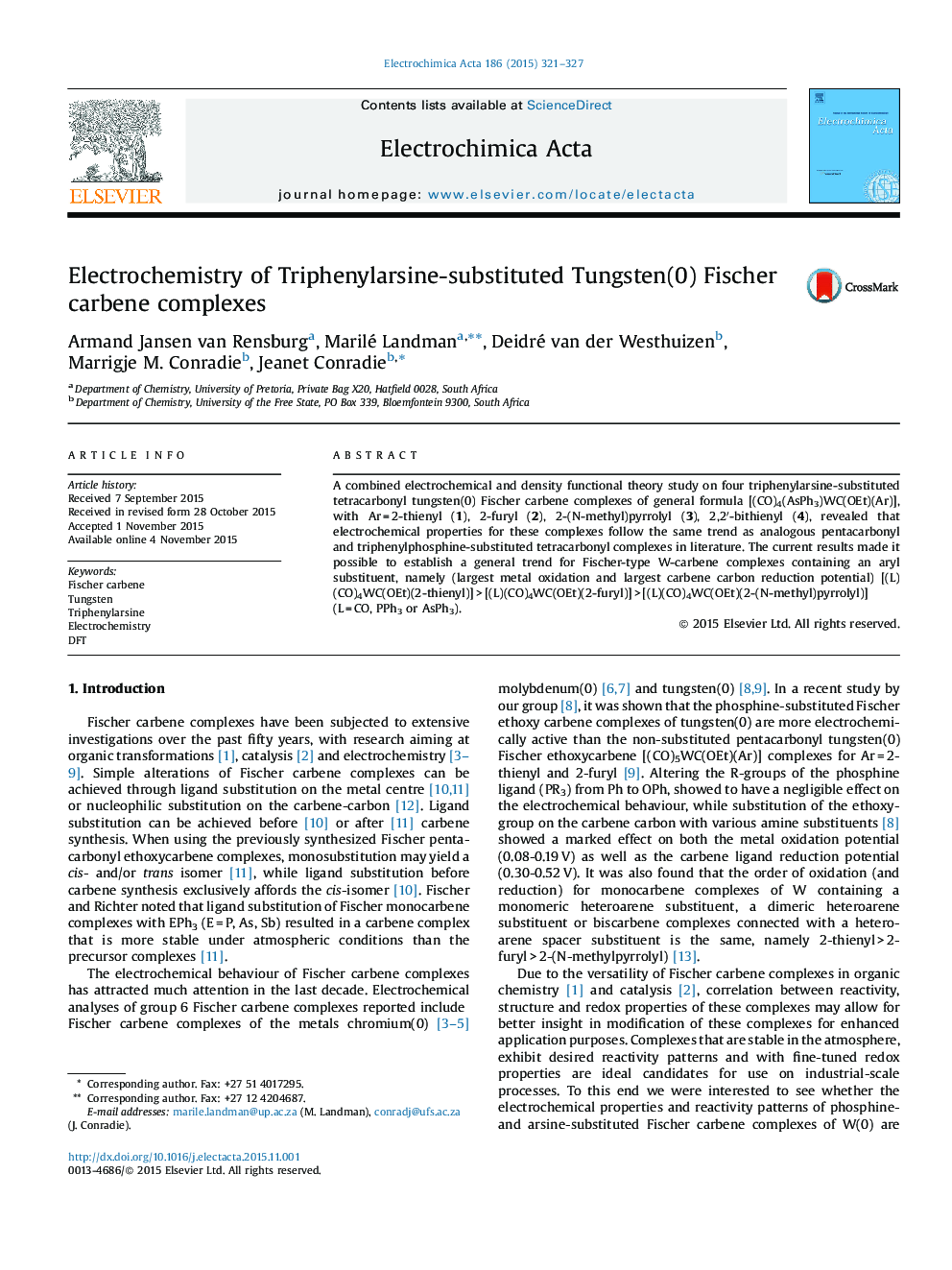| Article ID | Journal | Published Year | Pages | File Type |
|---|---|---|---|---|
| 183573 | Electrochimica Acta | 2015 | 7 Pages |
•Order of oxidation for cis-[AsPh3(CO)4WC(OEt)(Ar)]: Ar = C4H3S > C4H3O > C4H3NMe.•Order of reduction for cis-[AsPh3(CO)4WC(OEt)(Ar)]: Ar = C4H3S > C4H3O > C4H3NMe.•Increasing order of oxidation potential ∝ decreasing order of the energy of HOMO.•Increasing order of reduction potential ∝ decreasing order of the energy of LUMO.
A combined electrochemical and density functional theory study on four triphenylarsine-substituted tetracarbonyl tungsten(0) Fischer carbene complexes of general formula [(CO)4(AsPh3)WC(OEt)(Ar)], with Ar = 2-thienyl (1), 2-furyl (2), 2-(N-methyl)pyrrolyl (3), 2,2′-bithienyl (4), revealed that electrochemical properties for these complexes follow the same trend as analogous pentacarbonyl and triphenylphosphine-substituted tetracarbonyl complexes in literature. The current results made it possible to establish a general trend for Fischer-type W-carbene complexes containing an aryl substituent, namely (largest metal oxidation and largest carbene carbon reduction potential) [(L)(CO)4WC(OEt)(2-thienyl)] > [(L)(CO)4WC(OEt)(2-furyl)] > [(L)(CO)4WC(OEt)(2-(N-methyl)pyrrolyl)] (L = CO, PPh3 or AsPh3).
Graphical abstractFigure optionsDownload full-size imageDownload as PowerPoint slide
